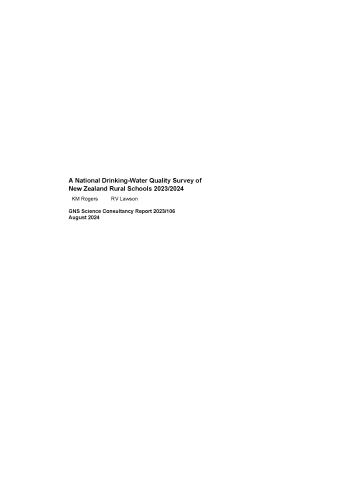This report provides results from the National Rural School Drinking Water Survey 2023–24, which was the first-ever survey of its kind to comparatively test and assess 29 determinands potentially present in rural school drinking-water sources.
Water samples came from either untreated groundwater from bores, springs and surface sources (such as creeks and rivers) or alternatively treated tap water where schools were unable to sample before treatment. This report outlines the design, process and testing protocols used, summarises the collected water-quality results, evaluates them against drinking water standards, and provides recommendations.
It was jointly commissioned by the Ministry for the Environment and the Ministry of Education.
This report provides results from the National Rural School Drinking Water Survey 2023–24, which was the first-ever survey of its kind to comparatively test and assess 29 determinands potentially present in rural school drinking-water sources.
Water samples came from either untreated groundwater from bores, springs and surface sources (such as creeks and rivers) or alternatively treated tap water where schools were unable to sample before treatment. This report outlines the design, process and testing protocols used, summarises the collected water-quality results, evaluates them against drinking water standards, and provides recommendations.
It was jointly commissioned by the Ministry for the Environment and the Ministry of Education.
Please direct enquiries about:
- school drinking water supplies to the Ministry of Education
- source water protection to the Ministry for the Environment
- drinking water compliance to Taumata Arowai
- technical report contents to GNS.
